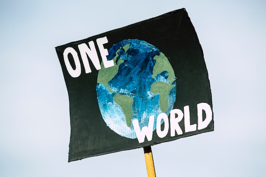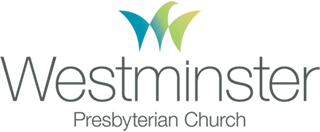Series: October 2022
Speaker: Bethany Nelson

Today's Sermon
"Taizé"
Mark 14:22-25
While they were eating, Jesus took a loaf of bread, and after blessing it he broke it, gave it to them, and said, “Take; this is my body.” Then he took a cup, and after giving thanks he gave it to them, and all of them drank from it. He said to them, “This is my blood of the covenant, which is poured out for many. Truly I tell you, I will never again drink of the fruit of the vine until that day when I drink it new in the kingdom of God.”
In 1940, Roger, a young theology student in France was troubled as war raged in Europe and Germany took control of a part of France where many of his mother’s relatives lived. As tensions mounted, Roger dreamed of owning a house that – in his words – “could assist some of those most discouraged, those deprived of a livelihood, and it could become a place of silence and work.”[i] He began looking for such a property and found what he was looking for in a small, remote village called Taizé, which was only a few miles from the demarcation line separating the German-occupied region of France from free territory. After Roger acquired this house, through various connections, war refugees began to find their way to Roger’s door. Though he was poor and food was sparse, he fed and cared for his guests as best he could.
Over the next few years, other theology students heard about what Roger was doing in Taizé and went to join him in serving the poor and downtrodden, and praying regularly together, three times a day. Even after the war ended, the men continued to worship and serve together. In 1949, seven of the men established themselves as one of the first Protestant monastic orders in the history of the Christian church, with Brother Roger as their prior.
Time continues to pass, and more and more people hear about what is happening in Taizé – a community that prays regularly together and is focused on service. Each year, the brothers see an increase in the number of people visiting and participating in the community. Soon, the visitors are not just Protestant, but Catholic as well. Jump to the mid-60s, and Roman Catholic brothers begin to officially join the community – a testimony to the growing ecumenical movement at Taizé. The brothers also notice that a majority of their visitors are younger adults and they begin planning gatherings specifically for young people. In February of 1970, young adults from 42 different countries were present on the Taizé grounds (which had grown significantly by that time). By 1974, over 60,000 Protestants and Catholics were visiting Taizé each year.
Fast forward again to 1989, when the Berlin wall falls, and almost overnight, the Taizé community feels the impact of this. They begin to welcome over 100,000 visitors throughout the year, and for the first time those of the Eastern Orthodox faith come to Taizé. Several different Christian traditions now worshiping and serving together. Sadly, Brother Roger died in 2005 at the age of 90, but the Taizé community continues on, now under the leadership of Brother Alois, a German raised in the Roman Catholic tradition.
So why am I telling you all of this? Because today is World Communion Sunday – it’s always the first Sunday of October – a Sunday when we celebrate Christians around the world coming together at the Lord’s Table. When thinking about how I might illustrate this hope and promise of unity in the Christian faith, I immediately thought of the Taizé community. A community that for 80 years has lived out its Christian values of peace and trust and service and acceptance and reconciliation day after day. A community where Christians from all over the world come together for a week at a time to work together (everyone at Taizé gets a job for the week to keep the community running), to pray and worship together three times every day, and to serve together. They come from different Christian traditions, they speak different languages, they have different political views and experiences, but for a week at Taizé, they experience how the world could be. A world where all are accepted and welcomed, where all work together toward common goals, where all are kind to one another. As Brother Roger once wrote, “Happy the community that becomes an abyss of kindness: it lets Christ shine through, incomparably.”
This is not some made-up utopia. This is the Taizé community. They are able to keep their focus on reconciliation and acceptance because they work hard at it. They are always willing to change and adapt when necessary to meet the changing needs of the time. For example, for the first several years, the brothers always prayed and worshiped in French. Visitors who spoke other languages tried to follow along and join in, but it was difficult. Brother Roger felt strongly that no one should be a spectator in Taizé and that all should be able to participate. The brothers decided that if they shifted their spoken prayers to sung prayers – and if they sang in Latin rather than a specific national language – the time of worship could be much more accessible for everyone. They began with just 3 or 4 simple chants, sung over and over again.
They soon realized that their repertoire was much too limited, so the brothers entrusted a friend, Jacques Berthier, to write new prayer music. The brothers had very specific requests –
- The chants had to be brief with an easy melody so they were simple to learn.
- Each prayer needed to reflect the ecumenical nature of the community.
- The aim was to have each prayer directed toward God.
- The brothers wanted at least most of the chants to be based in scripture.
By the late 1980s, the chants were used for much of the liturgy. The brothers substituted what was sacred to them – their traditional spoken liturgy - for something that could be accessible to all.
We are singing several of these Taizé chants as part of worship today. Remember, they are prayers – not composed only as songs, but as sung prayers. They are meant to be sung over and over again … many more times than we will today. I once heard it explained that there are three stages to praying a Taizé chant.
- The learning stage, where you are figuring out the words and melody.
- The lull stage, where you are singing, but your mind starts wandering.
- The lingering stage, where you no longer have to think about the words or melody. The chant becomes a living, breathing prayer that emerges from your soul as you dwell in the presence of God.
We won’t make it past the learning stage today, but keep in mind that these are prayers, not musical performances. They are written to enable everyone to participate and to dwell in God’s presence together. So as we sing, breathe deeply. Notice God’s Spirit within and among us. Be inspired by the Taizé community that dwells in peace and understanding. And then come to the table on this World Communion Sunday. Come to a table where all are welcomed and included. Come to a table that reminds us to live in peace and reconciliation, always. Amen.
[i]Much of this information about the Taizé community is from “A Community Called Taizé,” by Jason Brian Santos.

